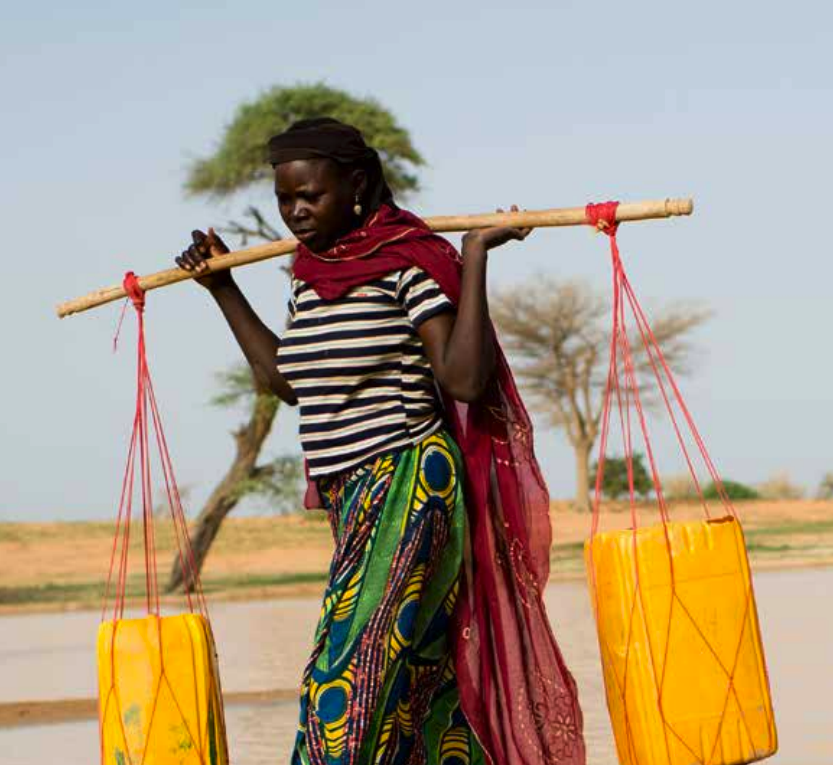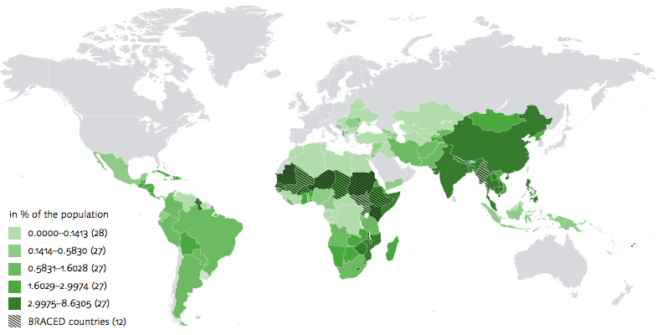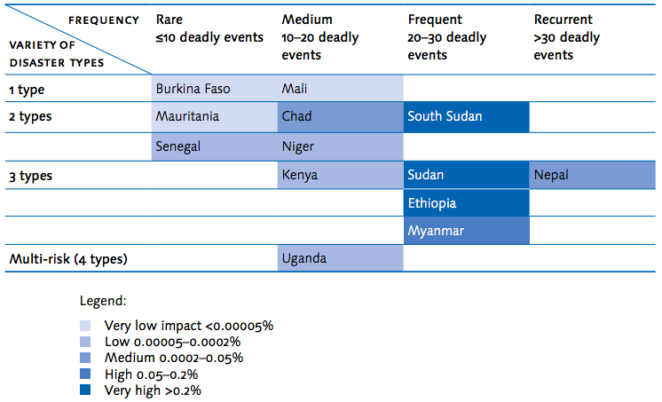Disasters and national economic resilience: An analysis of BRACED countries

Introduction
Natural disasters have severe negative impacts on the economies of developing countries, undermining their ability to prepare for and respond to future disasters.
This paper*, which focuses on 12 countries in the Sahel, East Africa and Asia that are part of the BRACED (Building Resilience and Adaptation to Climate Extremes and Disasters) programme, looks at how the national economies of different sets of developing countries are affected by disasters and the extent to which they have been able to ‘bounce back’ afterwards. It provides an analysis of economic resilience at the national level for each country, presenting a broad picture of changes in resilience to climate extremes over a 42 year period (1970–2012). The authors further create a typology of risk for countries, which can be used to inform approaches to building resilience.
The paper identifies the groups of developing countries that have been most severely affected by disasters over a 42 year period and compares the impacts of different types of disaster on each group. It then takes a closer look at these findings in order to understand trends and disparities in the nature and characteristics of risk; to develop historical national risk profiles and highlight which types of disasters have been most problematic. It also draws out policy-relevant implications, demonstrating that we need different approaches to strengthen resilience depending on risk levels, characteristics and profiles.
The final section presents an econometric analysis of the relationship between disasters and gross domestic product (GDP) per capita, generating some important insights regarding national resilience patterns. Although statistical and econometric analysis is not sufficient to identify the numerous factors that constitute resilience, it helps to identify gaps and challenges in the assessment of resilience at the national level. It can therefore be used to inform humanitarian response and recovery efforts, and in the design of monitoring and evaluation (M&E) frameworks for BRACED and other resilience programmes.
*Download the full text from the right-hand column. A summary of the key findings and implications can be found below – see the full text for much more detail and for details of the various methods used in the analysis.

Key Findings & Implications
This analysis of economic resilience in BRACED countries highlights a number of important issues of relevance to aid agencies engaging in resilience-building programmes:
- The disproportional attention paid to larger, rarer, events in preference to smaller, more frequent, events may be misguided.
- The range of risks and types of impacts must be considered when planning interventions, to account for the heterogeneity of country experiences, despite their general categorisation as ‘disaster-prone’.
- A more in-depth analysis is needed to assess the impact of aid on countries’ economic recovery process, as this could be undermining longer-term efforts to build resilience.
This study of disaster impacts and resilience at different scales generates a number of important findings for the BRACED programme and beyond:
- BRACED countries have been disproportionally affected by disasters, particularly climate-induced ones, when compared with other groups of developing countries. BRACED countries are thus particularly in need of initiatives that help build economic resilience so they can bounce back from the shocks they experience, reducing longer-term macroeconomic impacts.
- Disasters have had a more severe effect on some BRACED countries than they have on others. The countries experiencing more severe effects include Mauritania, Niger, Sudan and Kenya (when looking at numbers affected) and Ethiopia and Sudan (when looking at mortality rates). This finding is of importance for deciding where to allocate resources across these countries, and in particular to support action at the national level to build resilience.
- Drought has a disproportionate impact compared with other climate-induced disaster types in BRACED countries, particularly in Africa. Floods have resulted in fewer deaths and lower numbers affected than drought, but floods have been very frequent in all BRACED countries. Special attention therefore needs to be paid to vulnerabilities and capacities relevant to these hazards within broader resilience programmes.
The findings presented cannot be disaggregated at the subnational level, but shocks are not equally distributed across territories and impacts will be uneven. Agencies implementing projects at subnational levels should keep in mind the scale of analysis when supporting resilience, to make sure the metrics/ indicators used are consistent with the purpose of their projects.
The econometric analysis conducted for this study points to a negative significant effect of the share of the population affected by disasters on economic growth. A climate-induced disaster affecting 1% of the population contributes to a reduction in economic growth of 0.05% on average. The negative effects of the climate-induced disasters on economic growth are particularly significant and important in Landlocked Developing Countries (LLDCs -a group that includes most BRACED countries). These impacts are rarely the focus of resilience-building programmes, but they are important. Livelihoods and government programming will be undermined by poor economic performance and currently, international assistance in the form of post-disaster aid is not protecting economies from these impacts.
This study of resilience at the national scale highlights disparities between countries. Indeed, some countries have greater economic resilience than others. Therefore, identifying the structural characteristics of these countries is of particular relevance. Policies that target structural weaknesses could be particularly effective in reducing climate disruption. Economic diversification and trade openness, or insurance coverage could be important determinants of national capacity to absorb external shocks and could consequently represent a path to be followed to improve national resilience.
Statistical and econometric analysis is not sufficient, however, to identify the numerous factors that constitute resilience, as these are multiple and complex and vary from one region, country, district, community and even household to another. More mixed-method case study work is needed to understand these factors. The BRACED programme will generate important data for research thanks to the myriad of initiatives being implemented at the community level, many of them with interventions targeted at the subnational and national levels. Further support to policy, economic and institutional development is, however, also needed to avoid these negative economic impacts.

Note:The data used in this paper come from the Centre for Research on the Epidemiology of Disasters (CRED) Emergency Events Database (EM-DAT) on disaster loss and damage. EM-DAT is an open data source and provides international coverage, and is therefore the most appropriate dataset for our purposes. However, it also has important limitations: it is biased towards large catastrophic events and relies on ‘declared information’ – see pages 5-6 of the full text for more information.
Suggested Citation
Simonet, C., Comba, E. and Wilkinson, E. (2017) Disasters and national economic resilience: An analysis of BRACED countries. BRACED Working Paper. Overseas Development Institute: London, UK
(0) Comments
There is no content